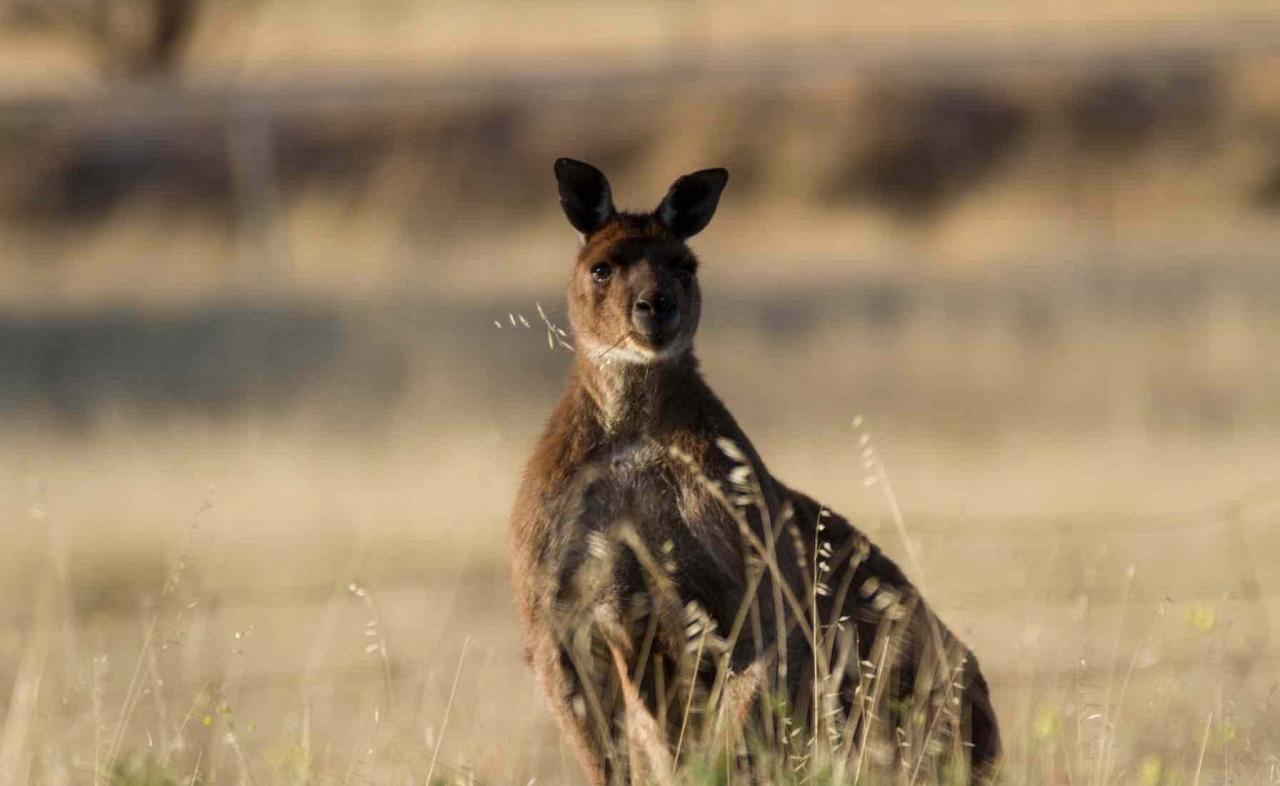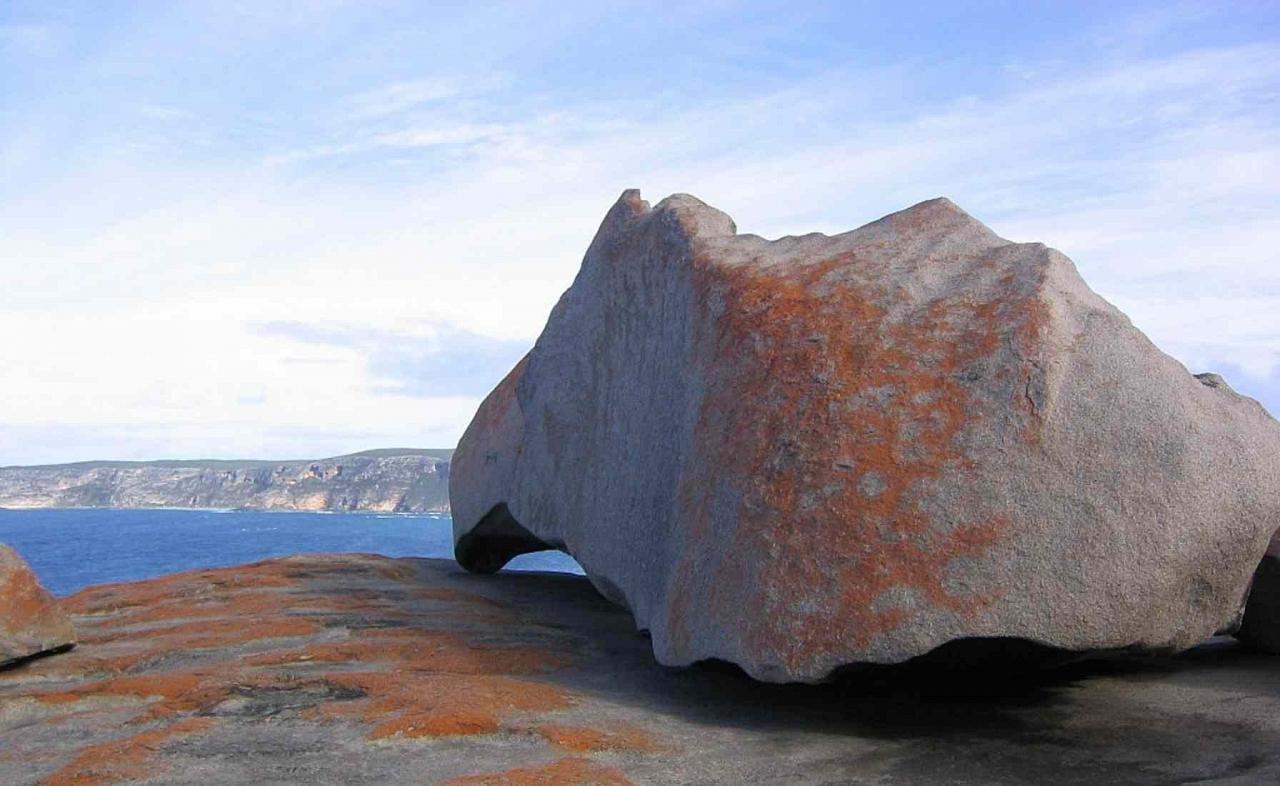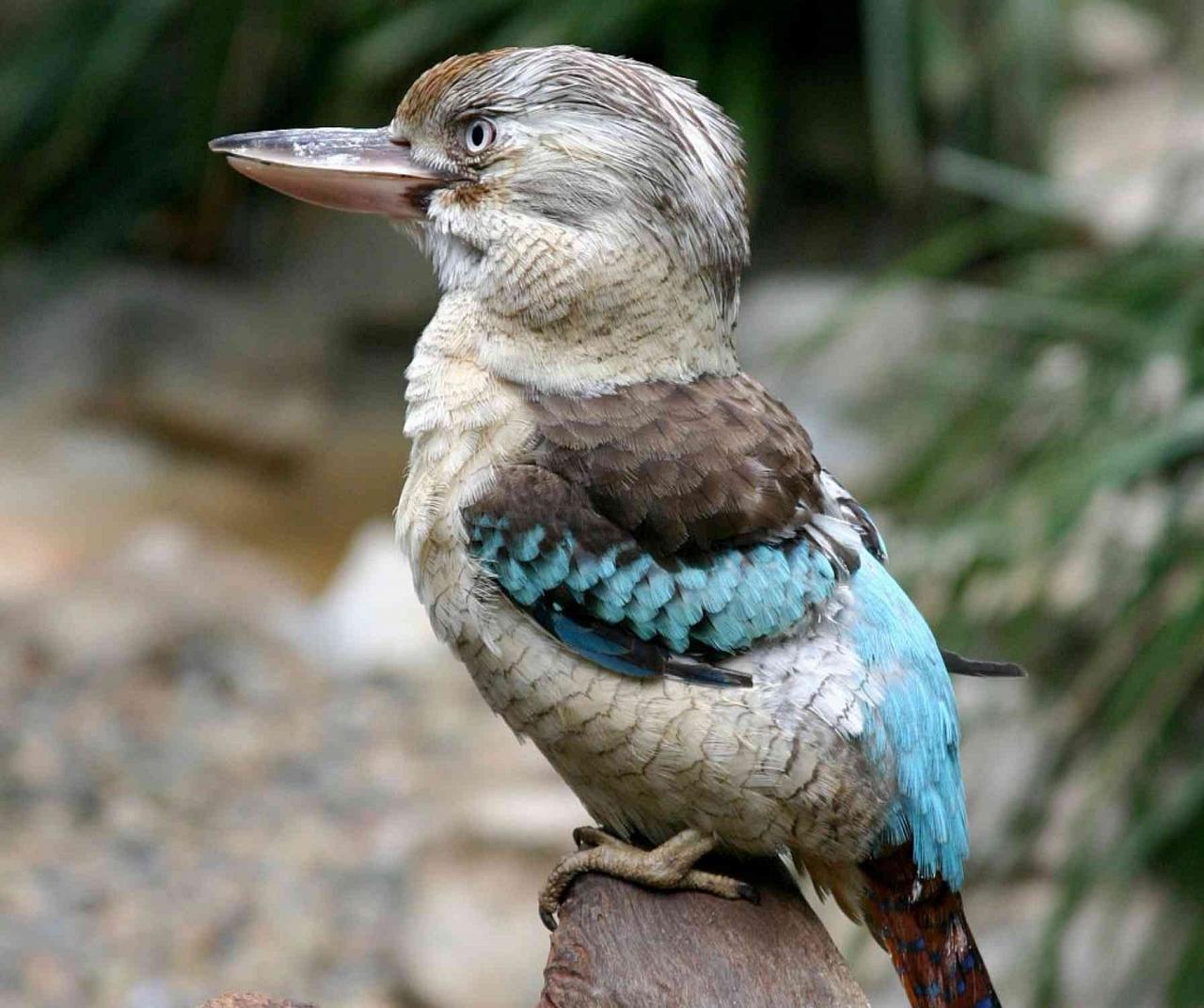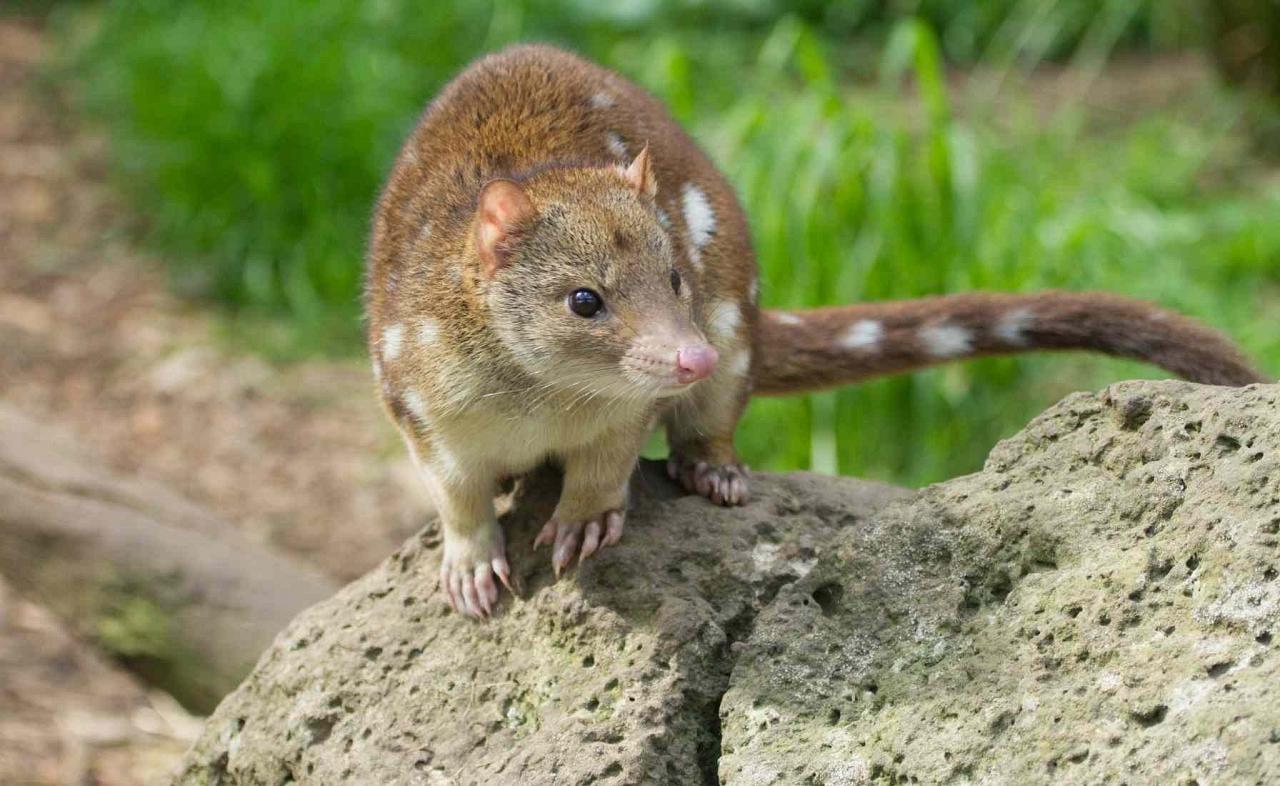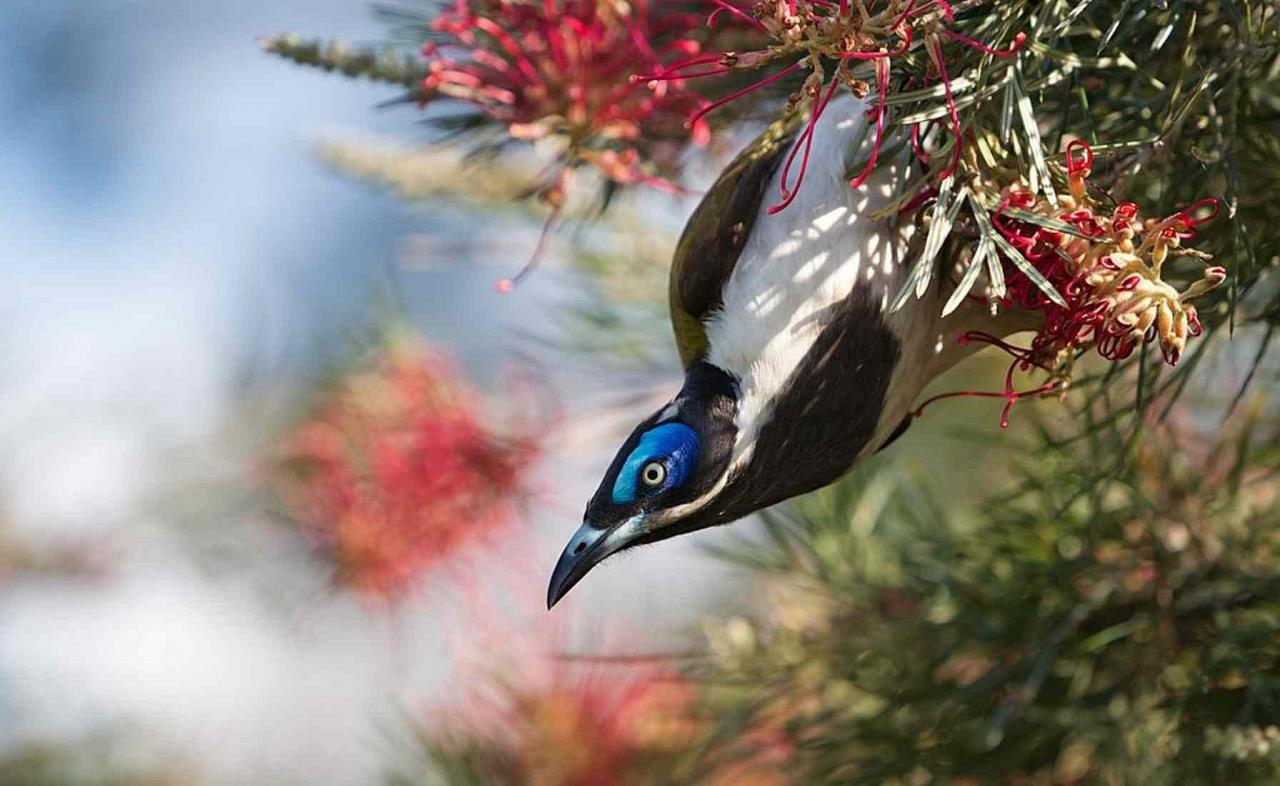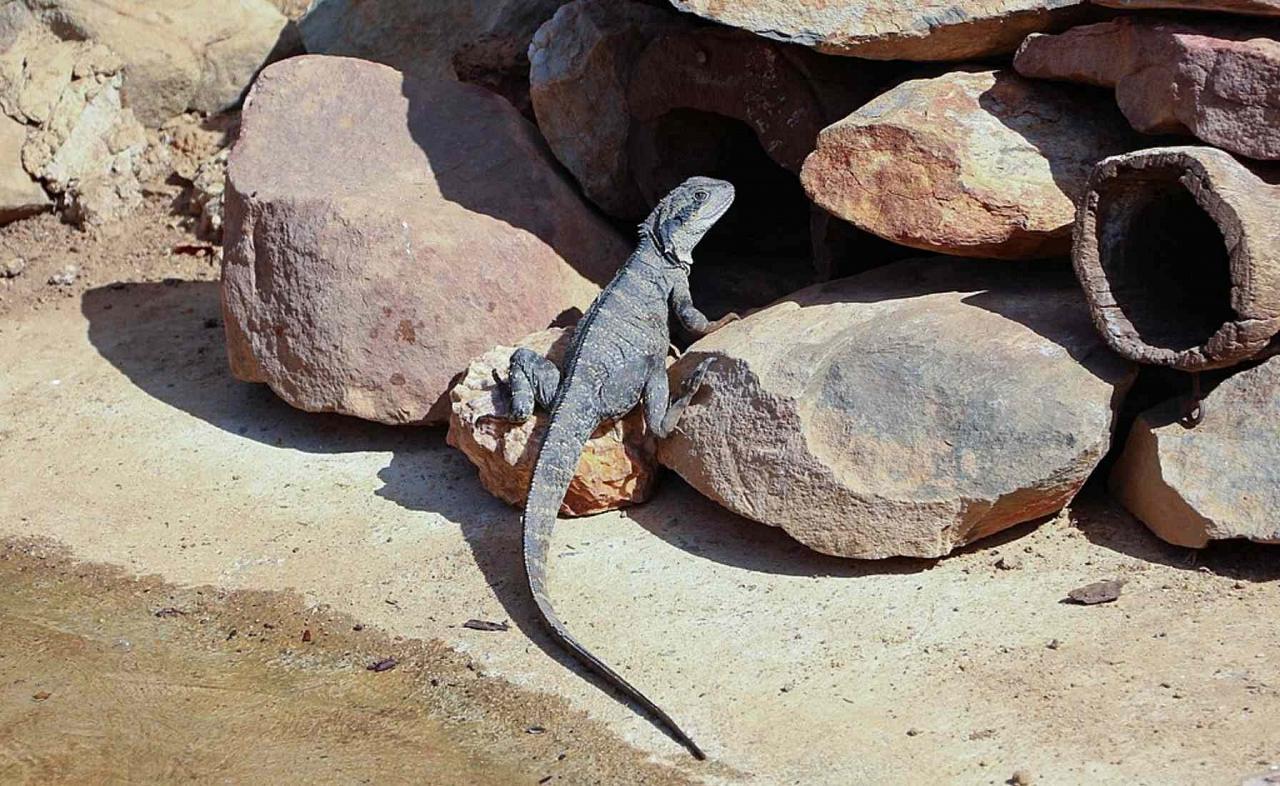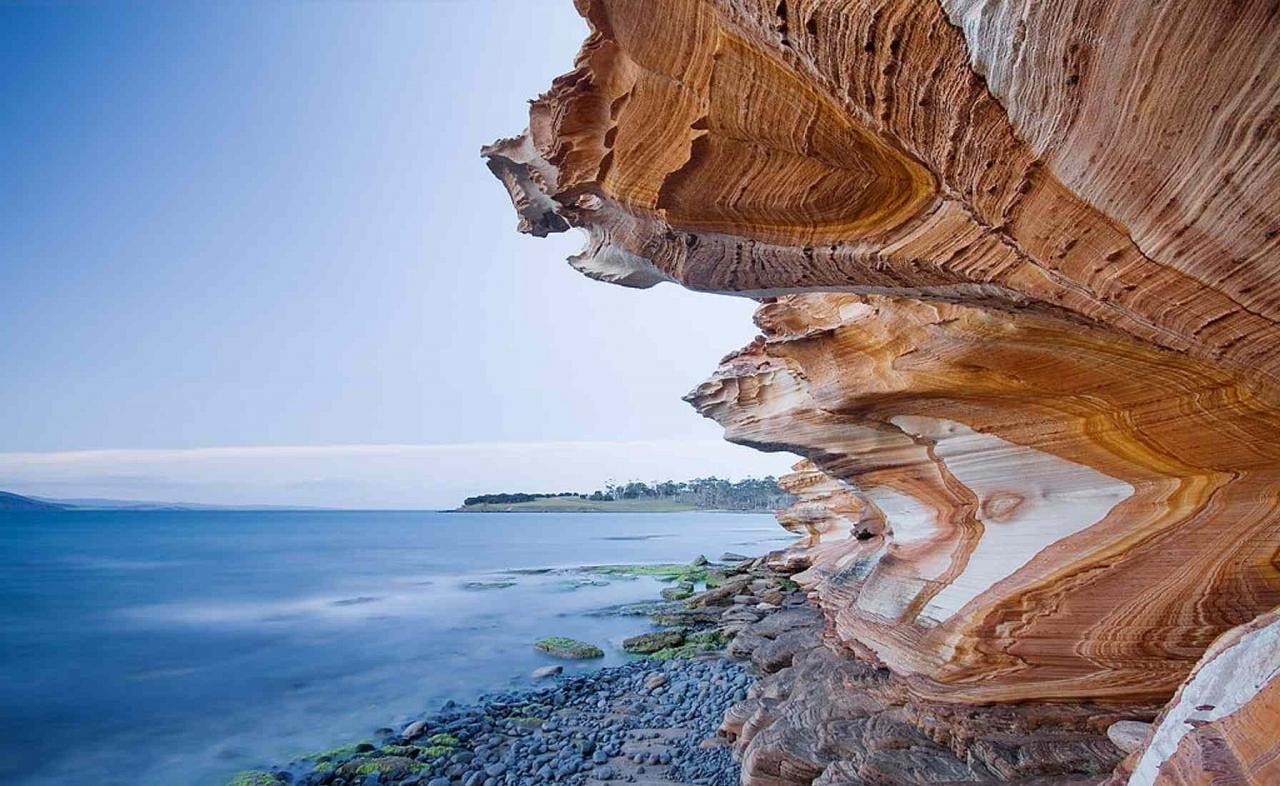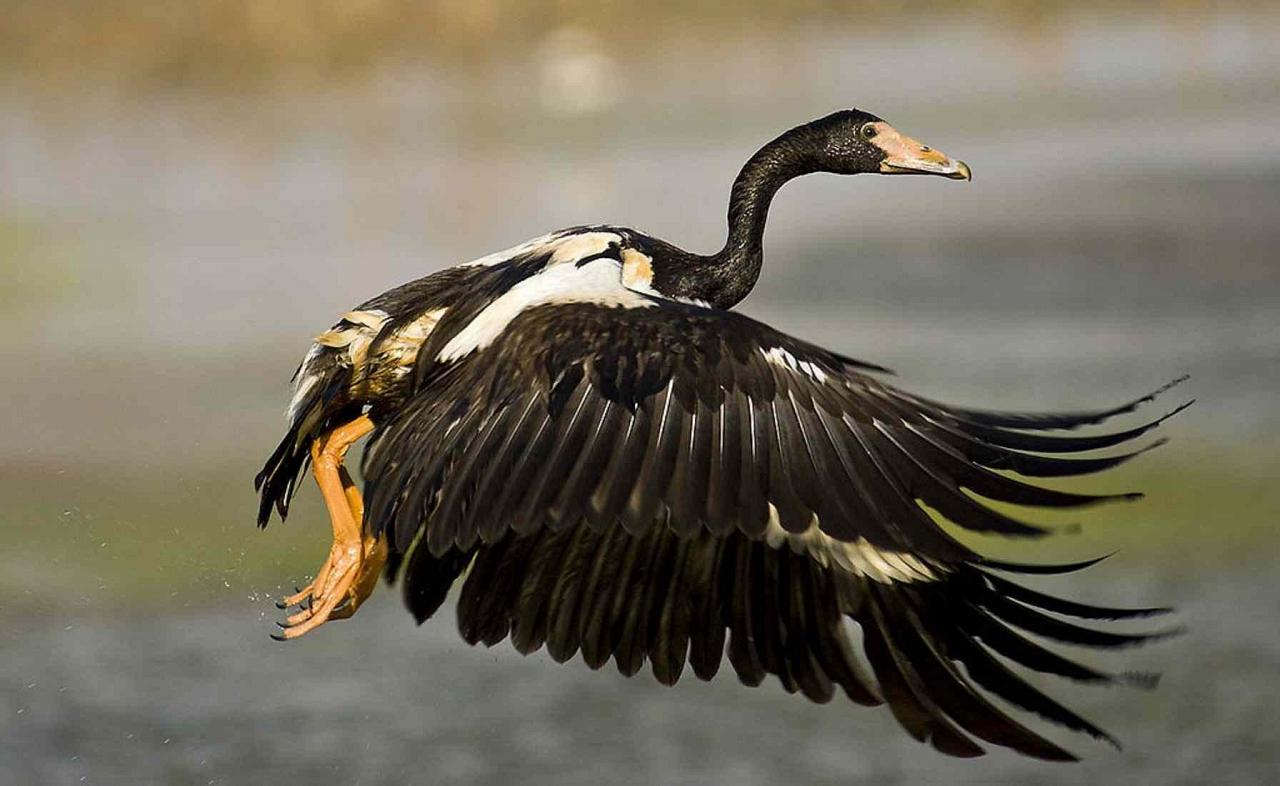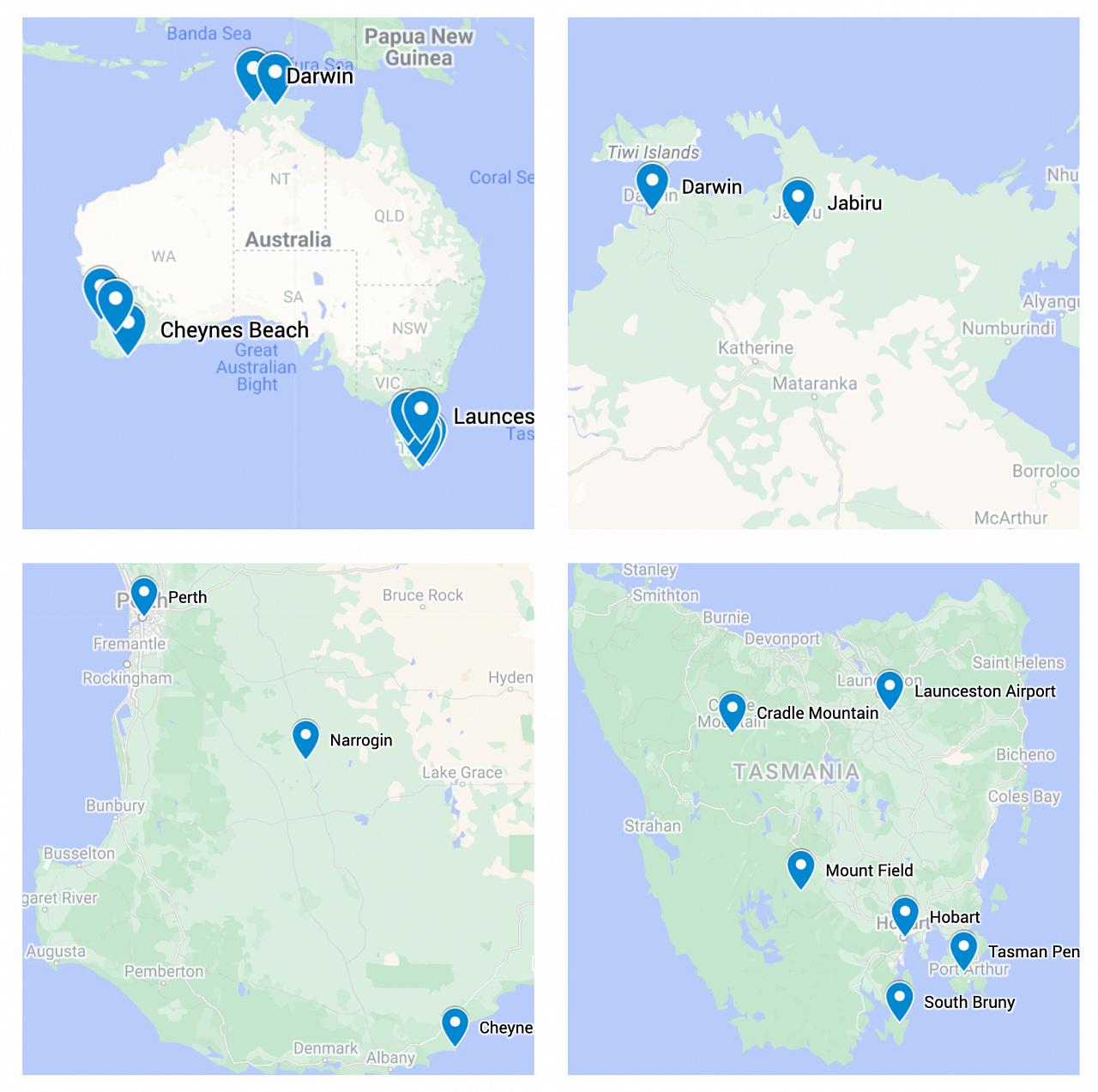Australia is a beautiful, BIG, and biodiverse continent, and we’ve chosen three of our favorites, most wildlife-rich locations for this adventure: Darwin and the northeast coast, Perth and the southeast coast and the fascinating wild isle of Tasmania.
We begin on Australia’s northeast coast, exploring the vast wetlands and billabongs of Kakadu National Park, home to a third of Australia’s bird species! Waterbirds are well-represented here, especially during our afternoon cruise of Yellow Waters Billabong, Kakadu’s best-known wetland. Elsewhere in the park we expect to see colorful finches, honeyeaters, and kookaburra. Other northeast birding hotspots we hit include Fogg Dam Conservation Area and the beautiful Darwin Botanic Gardens.
Moving to Perth and Australia’s southeast coast, we explore the woodlands, bush and grasslands of the 1000-acre Kings Park and Botanic Garden for the birds that call this area’s unique vegetation home. We then ferry to Rottnest Island, where we have our best chance to see and photograph Quokka, adorable and inquisitive marsupials that seem to smile! We also watch for Humpback whales, Bottle-nosed Dolphins, long-nosed fur seals and Australian Sea Lions among other marine mammals and many amphibians.
Still in the southwest, we spend three nights in the Cheynes Beach area, one of the country’s top birding sites and home to three endemic ‘skulkers,’ Noisy Scrub-bird, Western Bristlebird, and Western Whipbird and visit Dryandra State Forest in Narrogin, home to forest birds including cockatoos, bee-eaters, lorikeets, treecreepers and wattlebirds, and an impressive list of exotic mammals, including Bilby, Boodie, Mala, Marl and Mernine!
Saving the best for last, we transition to Tasmania, home to 12 endemic birds, and mammals including Forester Kangaroo, Common Wombat, Spotted-tail Quoll, Tasmanian Padmelon, Bennett’s Wallaby, Platypus, Echidna and Tasmanian Devil. With eight nights and nine days to enjoy Tasmania, we thoroughly explore the many habitats and hotspots of this gorgeous island jewel, including Cradle Mountain, Bruny Island, foodie Hobart, and enjoy a three-hour nature cruise off the island’s spectacular southern coast, where we marvel at the highest vertical sea cliffs in the Southern Hemisphere. Simply put, Tasmania will take your breath away!
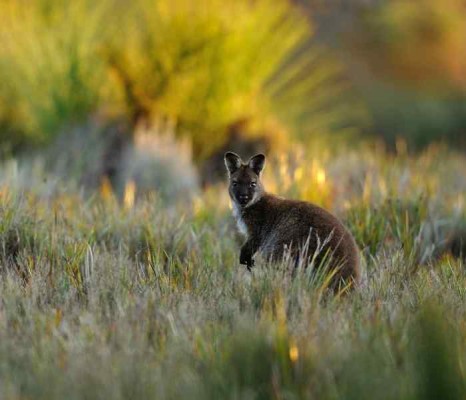
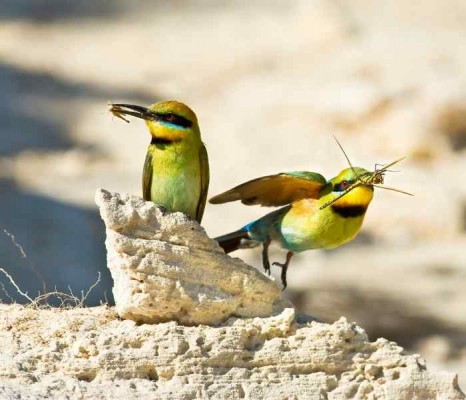
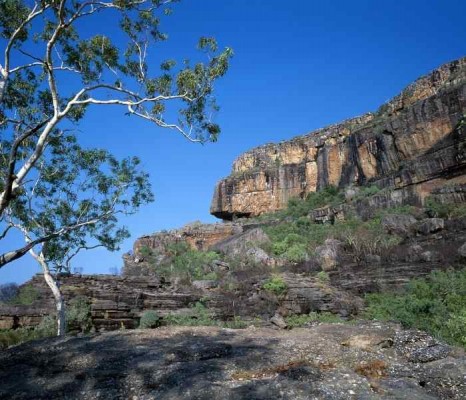
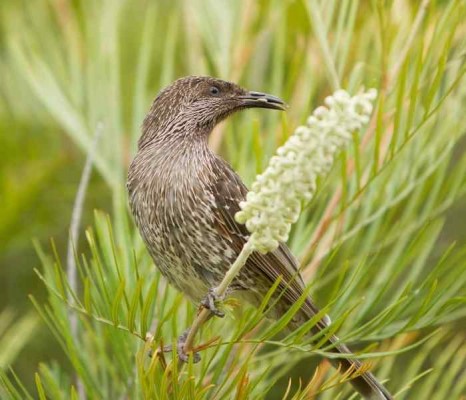
Tour Highlights
- Explore Darwin’s Botanical Gardens to find Red-collared Lorikeet, Orange-footed Scrub-fowl, Rose-crowned Fruit-Dove, Rainbow Bee-eater, Sacred Kingfisher, Brown Honeyeater, and more!
- Look for Chestnut Rail, Rufous Owl, Rainbow Pitta, Forest Kingfisher, Green Oriole, Blue-faced Honeyeater, Blue-winged Kookaburra in north coast mangroves
- Visit Fogg Dam to see Magpie Goose, Green Pygmy-goose, Pied Heron, Glossy Ibis, and the stately Brolga
- Experience world-heritage Kakadu National Park, with is impressive escarpments, ancient rock art, and arid-land mammals and birds.
- Cruise the Yellow Waters Billabong, Kakadu’s best-known wetland
- Explore the Darling Range for southwest endemic bird species such as Western Wattlebird and Gilbert’s Honeyeater
- Spend time exploring Perth and its wetlands
- Visit picturesque Cheynes Beach for Noisy Scrub-bird
- Enjoy eight nights in Tasmania, Australia's southeast island jewel, savoring visits to scenic, wildlife-rich Cradle Mountain, Bruny Island, Maria Island, and foodie Hobart
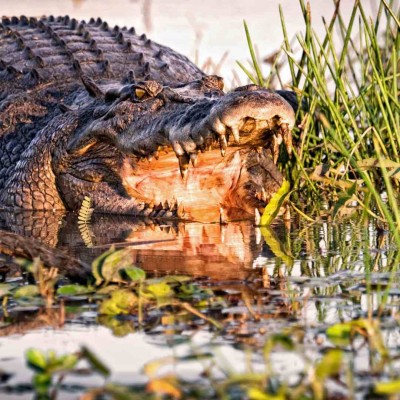
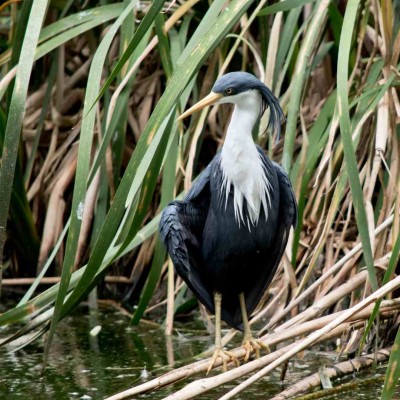
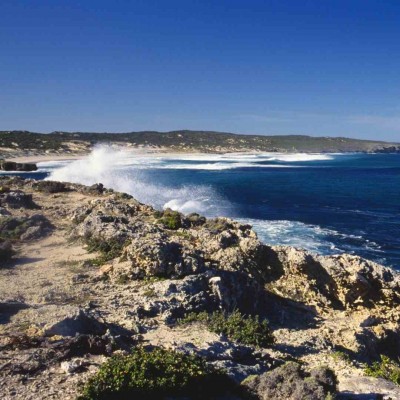
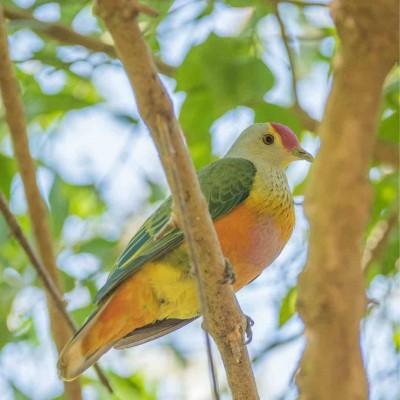
Trip Itinerary
Itineraries are guidelines; variations in itinerary may occur to account for weather, road conditions, closures, etc. and to maximize your experience.
Fri., Sept. 18 Arrivals in Darwin
Today has been set aside as an arrival day so you are free to arrive at any time that suits your travel plans. We meet at the hotel this evening for a brief orientation and welcome dinner with your local guide.
Accommodations in Darwin (D)
Sat., Sept. 19 Darwin to Jabiru (Kakadu)
This morning we start the day with a visit to Fogg Dam. This well-known site is an excellent area for waterbirds including Magpie Goose, Green Pygmy- goose, Pied Heron, Glossy Ibis, the stately Brolga, White-browed Crake and the quirky Comb-crested Jacana. En route to Kakadu we enjoy a stop at the Adelaide River crossing for lunch where we may see Mangrove Golden Whistler and a variety of flycatchers like Shining, Paperbark and Broad-billed Flycatchers. As we enter Kakadu, we start seeing iconic waterbirds like Magpie Goose, Plumed and Wandering Whistling Ducks, Radjah Shelduck, Black-necked Stork, and Green Pygmy-goose. After dinner, if time permits, we may do some spotlighting for nocturnal species such as Southern Boobook, Tawny Frogmouth, Large-tailed Nightjar and Australian Owlet-nightjar.
Accommodation in Jabiru, Kakadu (B,L,D)
Sun., Sept. 20 Jabiru & Yellow-waters Cruise (Kakadu)
This morning we visit Ubirr, a site of typical Arnhemland Escarpment rock outcrops, that is home to some impressive aboriginal rock art. The art depicts creation ancestors and animals of the area, including several fish and turtle species, wallabies and possums. Hopefully, Wilkin’s Rock Wallabies may be present in the shade of the rocks, and birds we may see here include Sandstone Shrike-Thrush & Chestnut-quilled Rock Pigeon. Elsewhere throughout the park we hope to connect with tropical woodland species like Partridge Pigeon (red eyed form), Rainbow Bee-eater, Black Bittern, Long-tailed Finch and Rufous-throated Honeyeater. In the afternoon we enjoy a cruise on the Yellow Waters Billabong, Kakadu’s best-known wetland. This impressive wetland of channels, swamps and floodplains is a delight to explore and is home to crocodiles aplenty and a variety of waterbirds including Nankeen Night-heron, Black-necked Stork, Little Kingfisher, White-bellied Sea-eagle, Pied Heron and Purple Swamphen. The stately Great-billed Heron and Black Bittern may also be seen. In the early evening we check in to our accommodation, and after dinner if we’re feeling energetic, we can spotlight for mammals like Black-footed Tree-rat and Savannah (Sugar) Glider.
Accommodations in Jabiru, Kakadu (B,L,D)
Mon., Sept. 21 Kakadu to Darwin
This morning we make an early visit to Nourlangie Rock where we have a reasonable chance of seeing the range-restricted Black Wallaroo, Banded Fruit-dove and White-lined Honeyeater. Also here are Little Woodswallow, Black-tailed-treecreeper and the sandstone form of Helmeted Friarbird. We then enjoy a last look around Kakadu before making our way out of the park and back to Darwin, exploring enroute.
Accommodations in Darwin (B,L,D)
Tues., Sept. 22 Darwin to Perth
Darwin is surrounded by a fantastic diversity of habitat types that we spend the rest of the day exploring for a range of interesting birds and mammals. Mangrove and monsoon forests are especially rich, hosting an impressive range of possible highlights includes the elusive Chestnut Rail, Rufous Owl, Orange-footed Scrub-fowl, Rose-crowned Fruit Dove, the striking Rainbow Pitta, Forest Kingfisher, Red-headed Myzomela, Mangrove Robin, Green Oriole, Blue-faced Honeyeater, Green-backed Gerygone, Spangled Drongo, Blue-winged Kookaburra, Great Bowerbird, Pheasant Coucal, Pied and Silver-backed Butcherbirds and Red-collared Lorikeet. Little Red Flying-fox and Agile Wallaby are possible mammal highlights. This afternoon we fly from Darwin to Perth. On arrival at Perth airport, you are met by your local guide and transferred to the nearby hotel where the group can check in and freshen up before a late dinner.
Accommodations in Perth (B,L,D)
Wed., Sept. 23 Perth to Cheynes Beach
This morning after an early breakfast we travel to the southern coastline of Western Australia. Today is a long travel day but we stop en route to bird. We visit the Darling Range in search of the first of the endemics with Western Wattlebird and Gilbert's Honeyeater. We continue to Williams and stop at the Beaufort River to look for Pink-eared Duck, Elegant Parrot, Brown-headed Honeyeater, Rufous Songlark, White-winged Triller and a chance of Painted Buttonquail and Black-tailed Native-hen. We continue to Kojonup and then to Rocky Gully where we look for Western Corella and Baudin's Black Cockatoo. We travel to Mt. Barker and then stop at Porongurup for more chances of Baudin's Black Cockatoo and Scarlet Robin. We hope to arrive at Cheynes Beach in time for a first look for Noisy Scrubbird.
Accommodations in Cheynes Beach (B,L,D)
Thurs., Sept. 24 Cheynes Beach | Waychinicup Inlet
This morning we take a pre-breakfast walk to look for Noisy Scrub-bird and Western Bristlebird. After breakfast, we spend the morning looking for Western Whipbird (nigrogularis), White-breasted Robin, Red-winged Fairy-wren, Splendid Fairy-wren, Western Wattlebird, Western Spinebill, Red-eared Firetail, Southern Emu-wren, Brush Bronzewing, Brown Quail, Sooty Oystercatcher and Pacific Gull. Lunch at Cheynes Beach. After lunch, we look for Rock Parrot along the beach and then visit the very scenic Waychinicup Inlet for more chances of Red-winged Fairy-wren, Red-eared Firetail, Southern Emu-wren, Gilbert's Honeyeater, Carnaby's Black Cockatoo, Baudin's Black Cockatoo, Swamp Harrier, White-bellied Sea-Eagle. There are also good chances during the day for Southern Brown Bandicoot and several reptiles and with luck Quokka and Bush Rat. After dinner, we take a spotlighting trip in search of Spotted Nightjar and Tawny Frogmouth with chances of a few mammals, frogs or reptiles.
Accommodations in Cheynes Beach (B,L,D)
Fri., Sept. 25 Cheynes Beach to Bremer Bay & Fitzgerald National Park
We head east to the picturesque coastal hamlet of Bremer Bay. The telegraph station, which was built in 1875 as part of the 3,200 km East-West line, still stands. From here, we visit the remote Fitzgerald River NP to look for the local subspecies of Western Whipbird, the Western (Mallee) Whipbird (subsp oberon), Shy Heathwren (subps whitlocki), and Western (Rufous) Fieldwren. This is another excellent area for wildflowers including the rare and exquisite Qualup Bell (Pimelea physodes). Among the larger species is the distinctive Royal Hakea (Hakea victoria), its tiny white flowers overshadowed by huge colorful leaves. After lunch we visit the mallee country where we search for Malleefowl mounds (may not be active) and look for Purple-gaped, Tawny-crowned and White-eared Honeyeaters, Southern Scrub-robin, Whitebrowed Babbler, Spotted (Yellow-rumped) Pardalote (subsp xanthopyge), Blue-breasted Fairywren, and Crested Bellbird. We also have chances of Banded Lapwing, Square-tailed Kite, and Painted Button-quail. Western Brush Wallaby also lives here. We stay in this area until late afternoon to search for Malleefowl along the roadside, before travelling back to Bremer Bay for dinner.
Accommodation at Bremer Bay (B,L,D)
Sat., Sept. 26 Bremer Bay to Narrogin
Today is a long day on the road. If conditions allow, we spend some time on the red dirt roads of Corackerup Nature Reserve, an area of mallee, mallet and marlock (types of eucalypt) that offers another chance of Malleefowl as well as Emu, Southern Scrub-robin, Spotted Scrubwren, and Purple-gaped Honeyeater. We then head north, passing through Wagin (home of the giant Merino!), Katanning, and Gnowangerup. We visit several lakes near Wagin where the main species we look for are Banded Stilt, Red-necked Avocet, Black-fronted Dotterel, Red-kneed Dotterel, Pallid Cuckoo, Horsfield's Bronze-Cuckoo, Chestnut-rumped Thornbill, Mistletoebird, Mulga Parrot, and Hooded Plover (subsp tregallasi). We arrive in Narrogin in late afternoon.
Accommodations in Narrogin (B,L,D)
Sun., Sept. 27 Dryandra State Forest, Narrogin
We depart after an early breakfast for Dryandra State Forest. We hope to see Bush Stone-curlew, Painted Button-quail, Carnaby's Black Cockatoo, Elegant Parrot, Rufous Treecreeper, Blue-breasted Fairy-wren, Western Thornbill, Yellow-plumed Honeyeater, Brown-headed Honeyeater, Gilbert's Honeyeater, White-eared Honeyeater, White-browed Babbler, Varied Sittella, Jacky Winter, Scarlet Robin, Red-capped Robin, Hooded Robin, Western Yellow Robin and Crested Shrike-tit. We also search for Numbat throughout the day, with the best chance in the late afternoon. After an early dinner, we take a walk in an extensive fenced enclosure within Dryandra State Forest where the Department of Parks & Wildlife’s amazing efforts at breeding a variety of threatened species has been very successful. We may encounter Bilby, Boodie (Burrowing Bettong), Mala (Rufous Hare-wallaby), Marl (Western-barred Bandicoot) and Mernine (Banded Hare-wallaby). This hare-wallaby is the sole surviving species of sthenurine kangaroos in a safe fox-free environment. We return to our accommodations in the late evening.
Accommodations in Narrogin (B,L,D)
Mon., Sept. 28 Narrogin to Perth
We depart early this morning after breakfast. Activities for today depend on what we haven't seen. We have further options for Regent Parrot, Hooded Robin, Crested Shrike-tit, Red-eared Firetail, Baudin's Black Cockatoo, White-fronted Chat, Rufous Songlark, Brown Songlark, Gilbert's Honeyeater, Western Wattlebird and Fairy Tern. This afternoon is spent around the Perth wetlands including Herdsman Lake for waterbirds such as Blue-billed Duck, Musk Duck, Pink-eared Duck, Australasian Shoveler, Freckled Duck, Great Crested Grebe, Hoary-headed Grebe, Nankeen Night-Heron, Yellow-billed Spoonbill, Buff-banded Rail, Australian Crake, Spotless Crake, Swamp Harrier and Australian Hobby.
Accommodations in Perth (B,L,D)
Tues., Sept. 29 Rottnest Island
Today we spend the day at Rottnest Island which is accessed by a 90-minute ferry ride. We spend the day walking around the island, exploring the captivating flora and fauna, diverse marine life and wildlife and enjoying the natural landscapes while discovering the island’s rich and significant heritage. Today is the best chance of seeing the endearing Quokka (Short-tailed Scrub-wallaby), a small macropod that has become famous for their cute appearance. Rottnest Island provides habitat for the largest Quokka population and is critical for the species’ survival. We return to Perth and transfer to our hotel to freshen up before dinner.
Accommodations in Perth Hotel (B,L,D)
Wed., Sept. 30 Perth
Today we explore the Perth area. This includes a visit to Kings Park, a 400-hectare reserve near central Perth, two thirds of which is protected as bushland and provides a haven for native biological diversity. The Western Australian Botanic Garden, which displays over 3,000 species of the State’s unique flora is located within this area. This afternoon is spent around the Perth wetlands including Herdsman Lake for waterbirds such as Blue-billed Duck, Musk Duck, Pink-eared Duck, Australasian Shoveler, Freckled Duck, Great Crested Grebe, Hoary-headed Grebe, Nankeen Night-Heron, Yellow-billed Spoonbill, Buff-banded Rail, Australian Crake, Spotless Crake, Swamp Harrier and Australian Hobby. There is also an option for those who wish to take some down time today and perhaps travel into the city of Perth to explore by yourselves. The group can reunite for dinner this evening.
Accommodations in Perth (B,L,D)
Thurs., Oct. 1 Perth to Hobart
We have a leisurely start this morning before we transfer to Perth airport for our flight to Hobart, Tasmania. This is a full day of travel allowing for time-zone changes.
Accommodations in Hobart (B,L)(some meals at airports)
Fri., Oct. 2 Hobart Reserves & Drive to Eaglehawk Neck
This morning we begin our explorations of spectacular Tasmania by visiting several reserves in the Hobart area including Mount Wellington. This mountain, at a height of 1,270m (around 4,150 feet), affords spectacular views of the city and surrounding landscape on a clear day. Here we also take a walk through a fern glade with towering tree ferns where we have our first chance to see the endemic and rather shy Scrubtit as well as Tasmanian Scrubwren and the stunning Pink Robin. Further endemic highlights we look for today include Green Rosella, Tasmanian Native Hen, Black Currawong and Yellow Wattlebird. In the early afternoon we enjoy the scenic drive to Eaglehawk Neck. On arrival we bird some of the areas of interest enjoying the spectacular sea cliffs and breathtaking scenery typical of the area. We may well see Yellow-throated Honeyeater as well as a range of more widely distributed species including White-bellied Sea Eagle and Black-faced Cormorant.
Accommodations on the Tasman Peninsula (B,L,D)
Sat., Oct. 3 Tasman Island Cruise (or optional land-based touring including a visit to Tasman NP)
This morning we take a three-hour wilderness cruise along the spectacular coastline between Port Arthur and Eaglehawk Neck in southern Tasmania. The cruise travels beneath the highest vertical sea cliffs in the Southern Hemisphere at Cape Pillar. Guests explore waterfalls, rock formations, archways and deep-sea caves. The coastline is part of the Tasman National Park. It is home to a variety of wildlife including hundreds of seals, migrating whales and abundant sea birds in the thousands. At any time of year, we're likely to see the feeding frenzy of diving gannets, albatross and sea eagles wheeling on the wind, cliff-nesting cormorants and Peregrine Falcon, or a pod of playful dolphins surfing the bow wave of the boat. The custom built boats are ideal for viewing the spectacular coastline and wildlife of the Tasman Peninsula. Each vessel holds a maximum of 43 guests. Covered open-air tiered seating means an excellent all-round view and connection with the environment. The boats are safe, comfortable and gentle on the environment due to their fuel efficiency and low emission operation. Those participants that chose not to join the cruise can do some land-based touring with your local guide. Lunch is provided after the cruise and we then have time to explore the nearby Tasman National Park before returning to our accommodation late afternoon.
Accommodations on the Tasman Peninsula (B,L,D)
Sun., Oct. 4 Maria Island Excursion
We leave this morning to travel up the East Coast to Triabunna, where we take the short 30-minute ferry ride across to Maria Island. Maria is an island with a rich history, a World Heritage Listed Probation Station, fossil cliffs and a great array of wildlife. On the way across to Maria Island, we look out for seals, dolphins, Orcas and whales. Maria is a fascinating island with a wide variety of bird and mammal species. Of the mammals, we can expect to see Forester Kangaroo, Tasmanian Pademelon, Bennett’s Wallaby and Common Wombat. Maria Island has an abundant bird assemblage, with 11 of the 12 Tasmanian endemics occurring here. We use our time to stroll slowly around the northern part of the island, with outstanding scenery, and a large number of bird species including Cape Barren Goose, Australasian Pipit and Skylark on the grazed grasslands and Forty-spotted Pardalote, Swift Parrot, Black Currawong and several species of honeyeaters in the wooded areas. We head back on the afternoon ferry and return to Hobart. Depending on the mood and weather we may opt for some spotlighting after dinner in a Hobart reserve to search for Southern (Tasmanian) Bettong, Tasmanian Pademelon, Bennett’s Wallaby and Brush Tailed Possum.
Accommodations in Hobart (B,L,D)
Mon., Oct. 5 Hobart & Bruny Island
Depending on our timing and conditions we may opt to start our day in reserves around Hobart or alternatively venture directly down to Bruny Island. Situated 40km south of Hobart, Bruny Island is separated from the Tasmanian mainland by the D’Entrecasteaux Channel and accessed by a vehicle ferry. The ferry trip takes approximately 15 minutes where one can enjoy some wonderful scenery. This afternoon we visit Bruny’s southern coastline to view the second oldest lighthouse in Australia, and search for species such as Tawny-crowned Honeyeater, Olive Whistler and Yellow-tailed Black-cockatoo. Here we also have a chance to see the Tasmanian subspecies of Short-beaked Echidna, one of Australia’s two egg-laying mammal (montreme) species. After dinner tonight, we visit the Little Penguin and Short-tailed Shearwater colony to view these species at their burrows.
Accommodations on South Bruny Island (B,L,D)
Tues., Oct. 6 Bruny Island
Today we have a full day to explore Bruny Island. We start the day birding at ‘Inala’, a privately owned 1,500-acre wildlife sanctuary, which is home to all 12 Tasmanian endemic bird species, including one of the largest known colonies of endangered Forty-spotted Pardalote. Strong-billed, Yellow-throated and Black-headed Honeyeaters, Dusky Robin and Green Rosella are also regulars here. Several hides and platforms have also been built around the property that provide close views of some very special species, including a variety of raptors. At this time of year, we can expect to see the endangered white colour morph of Grey Goshawk, White-bellied Sea-eagle, Brown Goshawk, Brown Falcon and if we are lucky, Wedge-tailed Eagle. We also visit a variety of habitats on the island, from coastal beaches for Hooded Plover, Pied and Sooty Oystercatchers, Pacific and Kelp Gulls, to rainforest areas in search of Pink Robin and the endemic Scrubtit, Tasmanian Scrubwren and Tasmanian Thornbill. Tonight, we take an evening drive in search of Tasmania’s nocturnal marsupials. We are likely to see some species that are now restricted to Tasmania including Eastern Quoll (a relative of the Tasmanian Devil) and Tasmanian Pademelon. Bennett’s Wallaby and Brush-tailed Possum are also common here and rare golden/white colour morphs of both these species can sometimes be found. If we are lucky, we may also see Long-nosed Potoroo and some nocturnal birds like Tawny Frogmouth and Tasmanian Boobook.
Accommodations on South Bruny Island (B,L,D)
Wed., Oct. 7 Bruny Island to Mt. Field Area
This morning we depart Bruny early for Mount Field National Park. This area is an excellent back up site for endemic species, notably Scrubtit and Black Currawong, and is also a great place to experience a range of habitats from fern gullies with waterfalls, to alpine heathland and cool temperate rainforest boasting some of the tallest Eucalyptus in Australia. Today we have our first chance of seeing the bizarre Platypus, the other species of Australian monotreme. In the late afternoon we make our way out of the park to a nearby farm stay where we overnight.
Accommodations near Mt Field NP (B,L,D)
Thurs., Oct. 8 Mt Field to Cradle Mountain
This morning we travel north to Cradle Mountain National Park. While today is largely a travel day, we enjoy lovely scenery and stop en route to bird and stretch our legs. We arrive at our accommodation near the National Park in the late afternoon.
Accommodations near Cradle Mountain (B,L,D)
Fri., Oct. 9 Cradle Mountain Area
Today we have a full day to explore the area around Cradle Mountain and parts of northern Tasmania. This should provide a good chance to see more of Tasmania’s endemic bird species that we may have missed previously, such as Black Currawong and Yellow Wattlebird. In addition to the great birding, we can view endemic Tasmanian rainforest flora with ancient Gondwanan connections such as Pencil and King Billy Pines, Myrtle and the famous Fagus (Nothofagus gunnii) which is Tasmania’s only deciduous tree. This is also a good area to view Common Wombat. We also have a good chance of viewing Platypus, one of Australia’s most bizarre mammals.
Accommodations near Cradle Mountain (B,L,D)
Sat., Oct. 10 Departures
This morning we travel towards Launceston, visiting some wetlands enroute where there is a chance to view several waterbird species including Purple Swamphen, Spotless Crake, Australian Shelduck, Black-fronted Dotterel and Little Grassbird. We then travel to Launceston airport where you can depart for home. (B,L)
Cost of the Journey
The cost of the journey is per person, based on occupancy: $12,490 DBL / $14,990 SGL, from Darwin, Australia. The cost includes all specialist guiding and transport for day and night tours as outlined above, all meals as outlined in the itinerary, activities outlined in the itinerary, National Park entry fees, and other miscellaneous costs.
NEW! all tips other than your local guide are included (this includes tips for your driver, lodge and staff, day activities, meals and other services).
The cost does not include international or domestic Australian airfares, the airport transfer on day 1, alcoholic and non-alcoholic beverages and expenses of a personal nature (snacks, travel insurance, internet, laundry, etc).
The cost of the internal flights is estimated to be around $800 - $1,200 USD pp, subject to change.
Price is based on exchange rate from August 17, 2025. Subject to change if there is more than a 5% increase.
Travel Details
Please plan to make air travel plans only after the minimum group size has been met. We will send you a confirmation email as soon as the trip has been confirmed.
Arrival Airport: Darwin International Airport (DRW)
Arrival Details: Please plan flights to arrive September 18, 2026 no later than 5:00 PM.
Departure Airport: Launceston Airport (LST) in Tasmania
Departure Details: Please plan flights to depart October 10, 2026 after 2:00 PM.
Travel Tips: If you arrive early to rest up from your travels, you can book an early night at our first night tour hotel, The Leea Hotel. You can book online and send us the confirmation number, with the goal being you won’t have to switch rooms. If you want to get out and explore Darwin a bit, Mindil Beach, the George Brown Darwin Botanic Gardens, and Bicentennial Park are all within 1.5 miles of the hotel. Darwin is very walkable and transportation options include taxis and Uber.
Entry Requirements: See "Essential Information" section under the "Know Before You Go" tab.
Items of Note
Meals & Drinks
Breakfast generally consists of a continental style breakfast with cereal, fruit and yoghurt and tea/coffee. Full cooked breakfast is not generally offered at most locations. Lunch generally consists of a packed lunch style meal eaten in the field, with sandwich/filled roll, fruit, and a drink. Dinner is usually two course and consists of several options for main with the choice of either an appetiser or dessert. Drinks (soft and alcoholic) are generally not included but at lunches and breakfasts juice may be made available.
The itinerary
While we aim to follow the itinerary as planned, please note that the itinerary provided should only be used as a guideline. Depending on individual trip circumstances, weather, and local information, the exact itinerary may not be strictly adhered to. The guides reserve the right to make changes to the itinerary as they see fit.
Essential Information +
Pace & Protocols +
Packing List +
Suggested Reading List +
Useful Links +
Photo credits: Banners: Ayers Rock (Wikimedia Commons); Royal Spoonbill (Wikimedia Commons); Dove Lake; Koala (Canva Stock) Gallery: Kangaroo (Canva stock); Kangaroo Island (Phil Whitehouse); Blue-winged Kookaburra (Wikimedia Commons); Australian Water Dragon (Bernard Gagnon); Spotted Tail Quoll (Canva Stock); Blue-faced Honeyeater (Andrew Mercer); Australian Water Dragon (Bernard Gagnon); Painted Cliffs (Canva Stock); Magpie Goose (Creative Commons) Primary: Wallaby( Canva Stock), Rainbow Bee-eater (Canva Stock), Kakadu National Park (Canva Stock), Western Wattlebird (Canva Stock)




